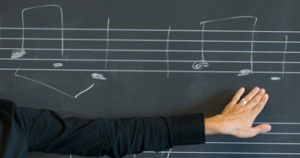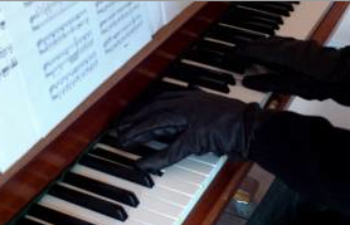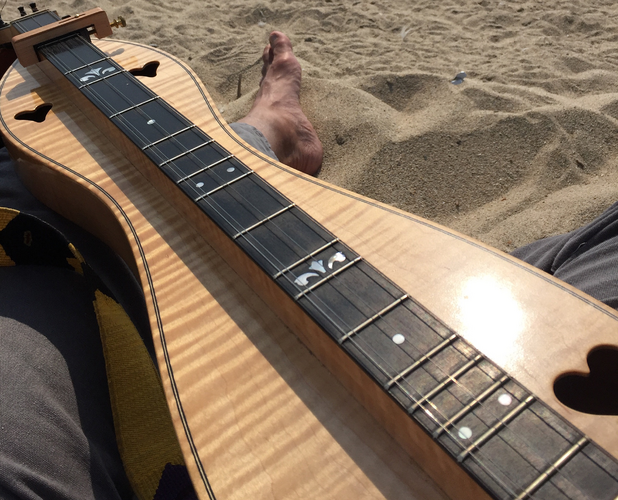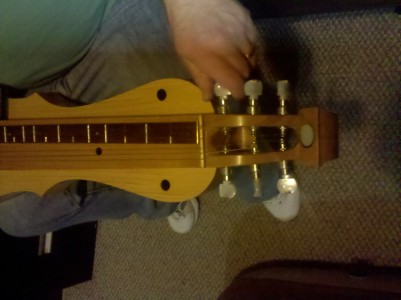Blog
mountain dulcimer
DulcimerCrossing & Music Education
 As former public school educators, Linda Ratcliff and Steve Eulberg, have designed the DulcimerCrossing.com website to support Music Educators, students and Homeschool students and teachers.
As former public school educators, Linda Ratcliff and Steve Eulberg, have designed the DulcimerCrossing.com website to support Music Educators, students and Homeschool students and teachers.The National Association for Music Education has created nationwide standards for musical education for the United States of America.
DulcimerCrossing.com lessons are designed to equip students to be successful in demonstrating their proficiency on 6 of these 9 standards.
You can read more about our goals here,…
Comparing the Chromatic and Diatonic Fretboards
In this FREE SAMPLE LESSON from www.dulcimercrossing.com, Guest Instructor, Erin Rogers, compares the Chromatic Mountain Dulcimer Fretboard with the (close to standard) Diatonic Freboard.
This is the first in Erin's Chromatic Mountain Dulcimer Lesson Series on our site. And I just found this treasure: David Beede, the maker of Erin's Chromatic Mountain Dulcimer filmed some video on its actual "Birthday"! Take a look:
Erin will be teaching in Winfield at the Warm-Up Picnic on Saturday, Se…
How to Choose a Mountain Dulcimer
 Criteria for Purchasing a Mountain Dulcimer
Criteria for Purchasing a Mountain Dulcimer
by Steve Eulberg We are fortunate to live in the midst of a sustained dulcimer revival! I used to host a list of builders across the North American Continent on my www.owlmountainmusic.com website. John Sackenheim had begun compiling that in the late 1990s. The list grew so large and had so many additions that it eventually became outdated and I let it return to the dust. Today, not only are there kits available for you to build your own, there are…
Building Your Own Instrument?
"If I hadn't built my first dulcimers, I probably wouldn't be playing them."
I'm not kidding. I played piano, trumpet, harmonica, guitar and mandolin before I ever heard a dulcimer (of either kind.) I first heard both kinds of dulcimers in college, played by traveling musicians who performed for us. The sounds were deeply implanted in me, because now playing these instruments is a large part of how I make my living.
But I never felt I deserved (or could a…
Introducing our newest Guest Instructor: Don Pedi!
DulcimerCrossing.com is very pleased to welcome Don Pedi as a mountain dulcimer instructor on our site. Here is a video in which he talks about how he got started playing and introduces us to some of his influences.
We encourage you to take his lessons and let him become one of YOUR influences!
Back 2 School Special!
It is that time of year again, when we change our rhythms, get out the school clothes, take pictures of the first day of school, and pick up our instruments to play them after our summer vacations. Here at DulcimerCrossing.com, we want to help you further develop your skills and enjoyment in making and sharing the music in your soul. So we have a deal for you!
We've added new teachers, we've got lessons for both mountain and hammered dulcimers, we've got lessons for dulci-bro (slide dulcimer…
Chromatic Mountain Dulcimer--The Dark Side?
"traditionalists" who argue for a standard diatonic dulcimer ("I don't want no extra frets bygummit!");
"neo-traditionalists" who argue for a modified diatonic dulcimer with a 6+ fret ("well it is pretty standard these days");
"practical-neo-traditionalists" who are supporters of multi-modified diatonic dulcimer with 6+ AND 1+ frets; ("but I NEED that extra fret to play C and F chords!")
"people on the DARK side" who are supporters of entirely chromatic mountain dulcimers. …
Benefits and Limitations of Different Tunings on Mountain Dulcimer? Part 1
Practicing in the Dark
by Linda Ratcliff

I'm spending the winter in sunny California, but I know many of you have been getting hit with some pretty cold weather. Brrrr. That reminds me of the way I used to practice piano. I usually arrived at school, during both my high school and college years, at about 6:30 in the morning, and I always went straight to the practice rooms. Now the school didn't turn on the heaters full blast until about 7:30 a.m., so to challenge myself (and because no one was looking), I would st…
What is Drone Style?
Once we have learned the melody of a tune we can begin adding notes in order "fill out" the sound of the tune. The easiest way to do this is to play "drone style". This is actually the traditional way to play the old mountain dulcimers which did not have frets that extended all the way across the fretboard, but only were present under the melody strings.

On the mountain dulcimer, the player plays the melody on the string(s) which are required for the melody and simply strums all…
Categories
- News (8)
- Events (4)
- News (6)
- Events (4)
- subscriber news (233)
- mountain dulcimer (110)
- hammered dulcimer (113)
- uncategorized (6)
- lessons (189)
- mountain dulcimer (198)
- hammered dulcimer (154)
- history (22)
- music theory (40)
- octave (1)
- plagal cadence (1)
- dulci-bro (73)
- fingerpicking (3)
- fingerstyle mountain dulcimer (4)
- nina zanetti (4)
- aeolian (2)
- dorian (4)
- ionian (3)
- lydian (1)
- mixolydian (3)
- modes (2)
- traditional (2)
- tuning (4)
- music education (2)
- NSME (1)
- standards (1)
- drone (3)
- folk alliance (1)
- jonah brody (1)
- koto (1)
- chromatic mountain dulcimer (7)
- sam lee (1)
- scottish folk song (1)
- linda ratcliff (5)
- practice (26)
- chromatic mountain dulcimer (66)
- dulcimercrossing.com (2)
- erin rogers (7)
- building (8)
- black mountain (1)
- jerry read smith (1)
- Joshua Messick (1)
- song of the wood (1)
- don pedi (5)
- fiddle whamdiddle (9)
- miss mcleod (2)
- steve eulberg (30)
- vi wickam (9)
- buying (1)
- choosing (1)
- purchasing (1)
- orphan girl (1)
- copyright (1)
- amplification (2)
- contact pickup (1)
- eulberg (4)
- microphone (2)
- pickup (2)
- berkeley (1)
- colorado (2)
- festivals (4)
- kentucky (1)
- scholarship (1)
- western carolina (1)
- noter (2)
- clubfooted jib (1)
- dgd (2)
- dgd tuning (1)
- special event (31)
- david massengill (2)
- reverse ionian (1)
- chuck boody (1)
- concertina (1)
- deedee tibbits (1)
- dulcimer (7)
- evart (1)
- evart funfest (1)
- linda foley (1)
- michigan (1)
- original dulcimer players club (1)
- fingerstyle (11)
- gebhard woods (1)
- technique (1)
- harmonics (1)
- dan delancey (2)
- june apple (1)
- linda thomas (3)
- modal (1)
- expression (1)
- playing expressively (1)
- dulcimer pledge (1)
- christmas (2)
- nativity (1)
- DAC (2)
- minor more (1)
- mississippi sawyer (1)
- holiday (5)
- joy to the world (1)
- jingle bells (1)
- reverse ionion (1)
- hand independence (1)
- hand separation (1)
- lullabye of muffe (1)
- tina gugeler (1)
- absolute beginner mountain dulcimer (1)
- beginner (2)
- mountain (3)
- string-side up (1)
- absolute beginner hammered dulcimer (1)
- blog (2)
- dulcimercrossing. (1)
- topics (1)
- blues (4)
- resonator (4)
- dulcimer orchestra (2)
- kitty puss (1)
- mike clemmer (1)
- noter style (2)
- jam survival (7)
- butch ross (3)
- looping (1)
- intro (4)
- neal hellman (4)
- erin mae lewis (9)
- rehearsal (3)
- italian (1)
- lauda (1)
- irish (1)
- slipjig (1)
- rhythm (2)
- robert force (2)
- tuner (1)
- exercises (1)
- scales (1)
- devotions (3)
- hark advent (1)
- the glad sound! (1)
- chords (3)
- chromatic (4)
- erin (1)
- theory (7)
- advent (5)
- preparation (4)
- stir up (1)
- appalachia (4)
- hillbilly (1)
- mountains (1)
- traditional music (1)
- dampers (1)
- hearts of the dulcimer (3)
- patricia delich (2)
- wayne jiang (2)
- appalachian (1)
- John Jacob Niles (1)
- Live Events (28)
- Premium Level Membership (2)
- habits from the muse (1)
- progress (6)
- support (1)
- Anna Muckova (1)
- cimbalom (1)
- CWA (1)
- Czech Republic (1)
- Magdalena Muckova (1)
- nonsuch (1)
- Slovak Republic (1)
- podcast (1)
- aubrey atwater (2)
- jean ritchie (2)
- log-in (1)
- update (1)
- lucky (1)
- performance (8)
- preparing (1)
- study (1)
- dulcimers (1)
- wendy songe (2)
- bluegrass (2)
- growth (1)
- resolutions (2)
- risks (1)
- capo (1)
- snark (1)
- fiddle (61)
- criticism (2)
- judy klinkhammer (1)
- miles davis (2)
- wrong note (1)
- live and let live (1)
- style (1)
- barlow knife (1)
- old school old-time (2)
- marie kirby (1)
- bass mountain dulcimer (1)
- elaine conger (1)
- larry conger (1)
- practice smarter (5)
- musical journey (1)
- piano (1)
- calm (1)
- dog (1)
- su la li (1)
- bluebird cafe (1)
- inspiration (3)
- new input (2)
- trust (1)
- practice space (2)
- quite (1)
- how to practice (6)
- you are what you practice (1)
- workshop (5)
- rich chords (2)
- kaitlin pabo-eulberg (1)
- hooked on dulcimers (1)
- humor (1)
- blue water thinking (1)
- creativity (2)
- environment (2)
- original tunes (1)
- 1+ fret (1)
- chopin (1)
- classical (1)
- assessment (1)
- skill levels (1)
- waltz (1)
- caledonian club (1)
- ensemble (1)
- group (1)
- dulci-tune (1)
- tuning game (1)
- love (2)
- workout (1)
- learning (7)
- teacher (6)
- self-taught (1)
- how long (1)
- jam sessions (6)
- learn to play (1)
- strategies (2)
- fariña (1)
- mimi (1)
- pete seeger (2)
- rainbow quest (2)
- goals (1)
- planning (1)
- backing tracks (6)
- matthew dickerson (2)
- concert (1)
- erin mae (2)
- guitar (5)
- deborah hamouris (3)
- dj (2)
- freight and salvage (1)
- classic (1)
- licks (1)
- rock (1)
- berkeley dulcimer orchestra (1)
- premiere (1)
- banjo (1)
- frank proffitt (1)
- frank warner (1)
- tom dooley (1)
- baker (1)
- binding (1)
- blue lion (1)
- bob (1)
- gluing (1)
- janita (1)
- live (1)
- tips (1)
- spouse (1)
- amplified (1)
- DI box (1)
- digital interface (1)
- sound reinforcement (1)
- 2nd Set Concert (2)
- contest (1)
- flash mountain dulcimer brigade (2)
- JimJim & the FatBoys (1)
- Pecan Grove (1)
- walnut valley festival (2)
- winfield (1)
- wvfest (1)
- thinking (1)
- case (1)
- cross-legged (1)
- grip (1)
- safe dulcimer (1)
- sit (1)
- slip (1)
- stand (1)
- stool (1)
- strap (1)
- learn (3)
- mistakes (1)
- successes (2)
- herbie hancock (1)
- improvising (1)
- jazz (2)
- lois hornbostel (2)
- wrong chord (1)
- atlantic (1)
- barbara allen (1)
- frank profitt (1)
- scots-irish (1)
- chord wizard (1)
- diatonic (2)
- equi-distant (3)
- tom strothers (1)
- tool (1)
- busker (1)
- tsimbaly (1)
- ukraine (1)
- ukrainian (1)
- calendar (1)
- schedule (1)
- baritone (1)
- concert window (3)
- katie moritz (1)
- faq (1)
- frequently asked questions (1)
- logged in (1)
- navigation (1)
- old time (1)
- patreon (1)
- shape-note (1)
- special (1)
- carrell (1)
- geoff reeve-black (1)
- malvern (1)
- presnell (1)
- articulations (1)
- chicken reel (1)
- conger (1)
- soldier's joy (1)
- basic level membership (1)
- caring for your instrument (1)
- winter weather (1)
- god rest ye (1)
- rhythmic displacement (1)
- builder (1)
- tam kearney (1)
- toronto (1)
- don neuhauser (1)
- slide (1)
- ashley ernst (1)
- dan and angie landrum (1)
- dpn (1)
- dulcimer players news (1)
- dulcimersessions.com (1)
- maddie macneil (1)
- arkansas traveler (1)
- Mark Alan Wade (2)
- 3d playing (1)
- playing across the strings (2)
- chord symbols (1)
- understanding chords (3)
- dulcimer club (1)
- class (1)
- habits (1)
- skills (1)
- jimmy driftwood (1)
- failures (1)
- hours (1)
- youtube (1)
- arranging (1)
- bill robinson (1)
- cold winter night (1)
- karen mueller (3)
- jig (1)
- DAd tuning (1)
- hyfrydol (1)
- hymn (1)
- 2020 (1)
- premium (1)
- gounod (1)
- hitchcock (1)
- dan evans (1)
- spotted pony (2)
- steveeulberg (1)
- nylon-string (1)
- stephens lutherie (1)
- musical devotions (1)
- award (1)
- fernando sor (1)
- hammered (1)
- understanding (1)
- lent (1)
- leap forward (1)
- power of music (2)
- sharing (1)
- persistence (5)
- Practice (4)
- routine (1)
- tour (1)
- new website (1)
- arrranging (1)
- celtic (1)
- single jig (1)
- mountain dulcimer (3)
- busking (1)
- audio (1)
- playback (1)
- protection (1)
- adaptations (1)
- dulcimer acquisition syndrome (1)
- dulcimer acquisition disease (1)
- contests (1)
- lessons (1)
- identify (1)
- apps (1)
- motivation (1)
- hands (1)
- In Memoriam (1)
- guitar (1)
- archive (1)
- concerts (1)
- mountain dulcimer (2)
- hammered dulcimer (1)
- lessons (1)
- workshops (1)
- self-assessment (1)
- learn (1)
- greek (1)
- mindset (2)


